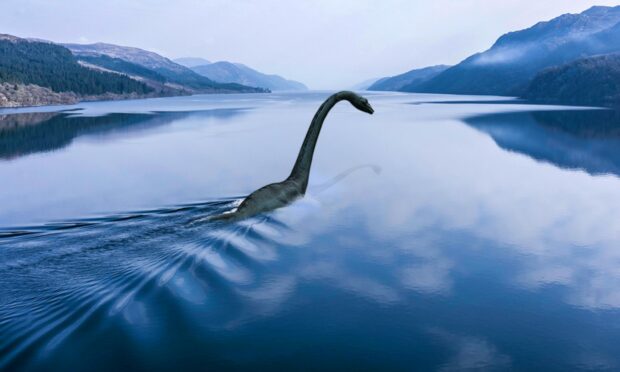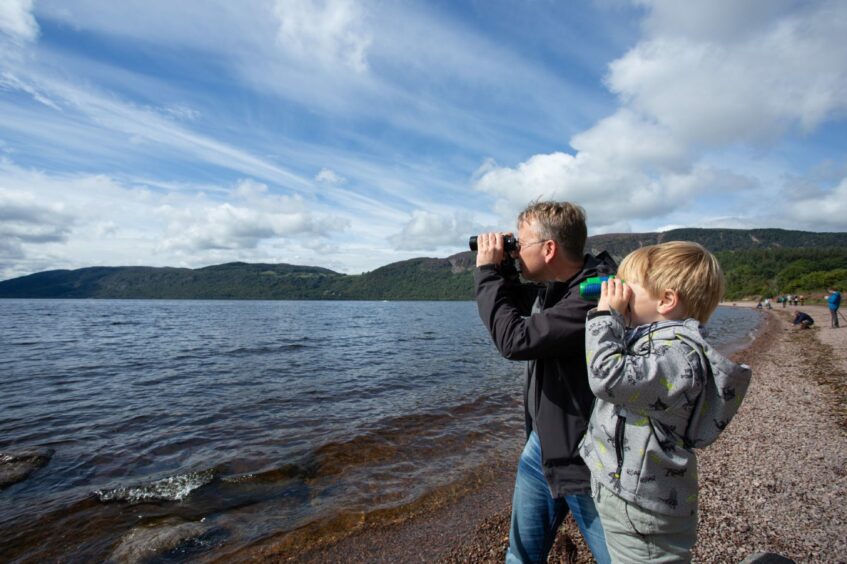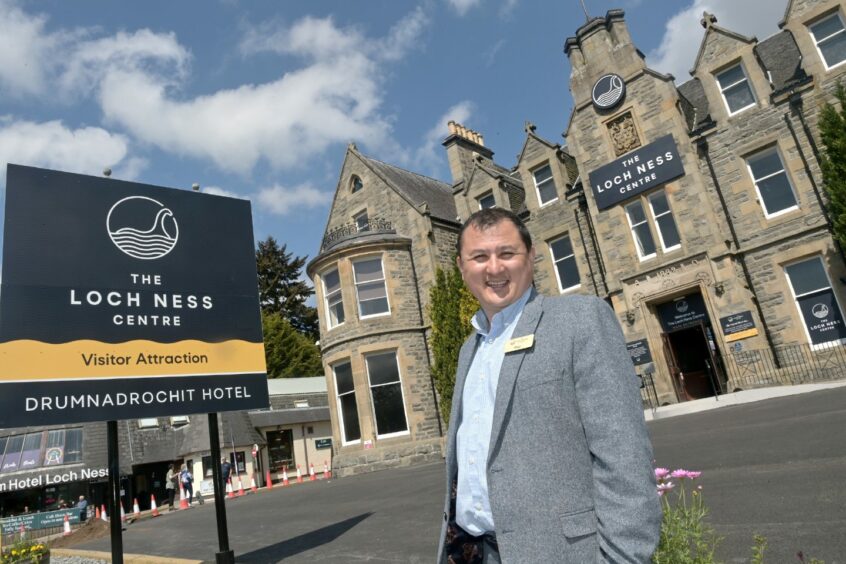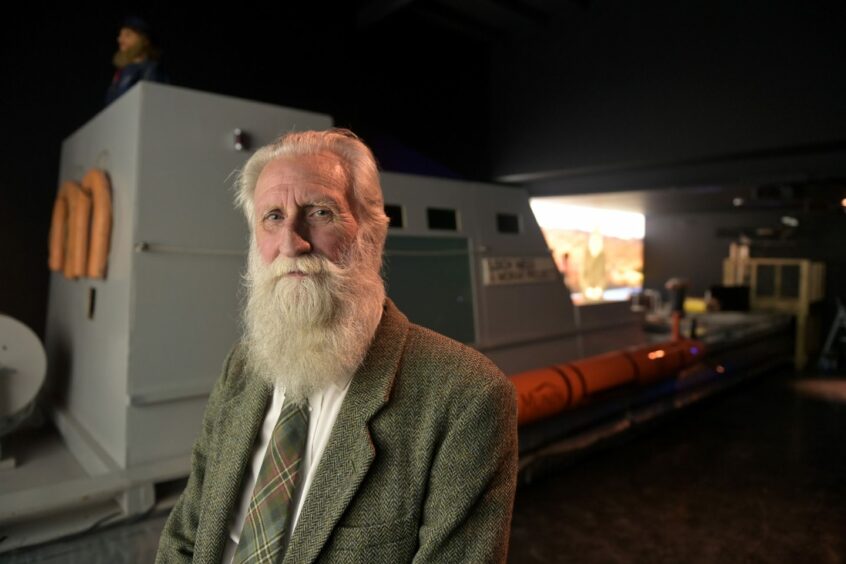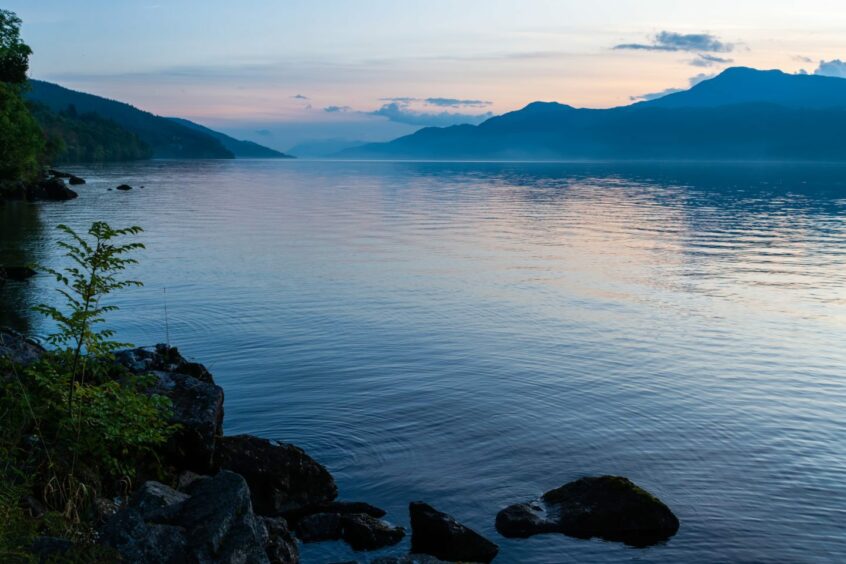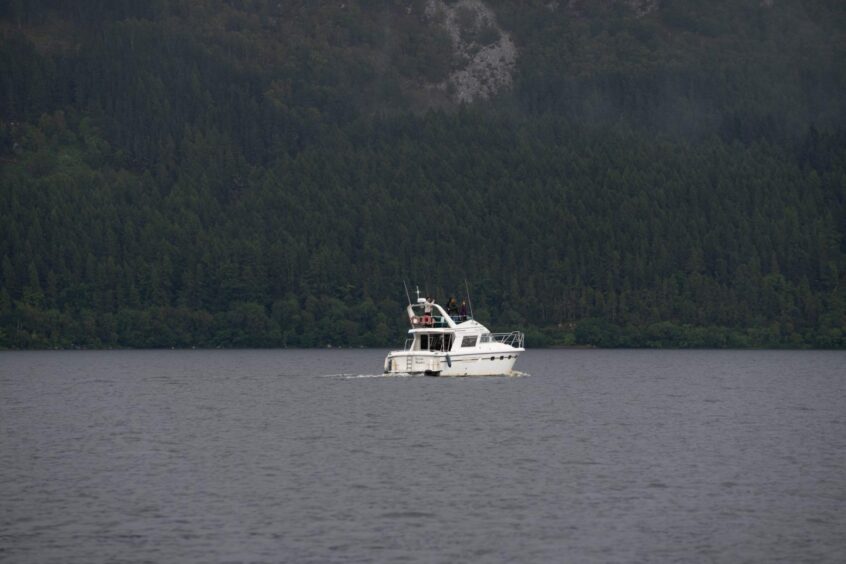The Loch Ness Monster is a defining symbol of Scotland – adorning postcards, biscuit tins and much more, with research devoted to unravelling the mystery behind it.
Over the years there has been more than 1,100 recorded sightings of Nessie. And while the traditional image that comes to mind is that of a long-necked creature with humps, descriptions of what people have seen over the years have differed.
Nessie was already hitting the headlines week after the biggest surface search of the loch in 50 years. But on Thursday there was excitement over newly revealed images.
Chie Kelly captured an unidentified large eel-like creature slowly spinning on the surface. Taken in 2018 at the Dores area, she and her husband saw a strange creature move over a distance of about 100 metres. It then disappeared and never re-surfaced. She came forward after last weekend’s search, saying she was previously too scared to.
St Columba is said to have encountered the monster in 565AD, and over the centuries there was mention of other sightings. However, interest ramped up after a sighting of a ” a whale-like creature” in 1933 by Drumnadrochit Hotel manageress Aldie Mackay.
There have been various theories about what Nessie could be, including a plesiosaur – a type of marine reptile that became extinct 65 million years ago. While it’s also been mooted it could be a giant eel or fish such as a catfish or sturgeon.
Research in 2018 revealed the Loch Ness Monster was worth £41 million to the economy. And it seems the interest in it is as strong as ever.
Why is there such ongoing interest in Nessie?
Last weekend’s search resulted in four mysterious and previously unheard loud noises from the depths of the loch. There were also multiple submissions of potential sightings. Footage of something on the loch which appeared to have humps was also filmed by wild swimmers.
Small crews of volunteers were ferried out into the loch guided by Loch Ness Exploration guide Alan McKenna on the vessel Deep Scan.
Out in the middle of the loch, the crew used hydrophone equipment to detect noises or movements far below the water’s surface.
Paul Nixon, general manager of the Loch Ness Centre, was among those there.
Speaking of how the mystery of the Loch Ness Monster captivates people, he told me: “I think it’s because it remains to this day, one of our greatest unsolved mysteries, and so accessible now.
“People log on to the webcams, and they can see Loch Ness and they can instantly feel like they could be the next person to spot something mysterious.
“You can go to the banks of Loch Ness, surround yourself in the stunning Scottish scenery, and instantly be part of the quest be part of this search to try and shed some light on this. So I think that’s what one of the reasons it’s so enduring.
“If you ask anybody what their earliest memory of Nessie is, they’ll say that they’ve engaged with the story from a very early age, so it’s not something that you suddenly hear about in your 20s or 30s or 40s. As a child, you you are told the story of the Loch Ness Monster, you are told the legend so it’s something that sits with you, I think, throughout your life.”
What are people seeing – is it a monster?
There has never been any definitive evidence found. Various explorations have been carried out on the loch including investigations in the 1960s and 70s.
Adrian Shine, a naturalist and leader of The Loch Ness Project, has spent decades investigating.
And in 1987, the project launched Operation Deepscan – a sonar exploration of the loch.
Adrian said the focus of the project was now on witnesses and human perception. He said: “We’re now looking for reasons why there isn’t a Loch Ness Monster if you like, because there ought to be because people see them.”
“The idea of the Loch Ness Monster is accessible as a big animal – is it there or is not. So it’s an accessible idea. The second accessibility of Loch Ness lies in its geographical accessibility. For dragons, we still need lost worlds, the Highlands in a way are dragon country.
“The loch is big and it’s deep. It’s dark, and hostile and there’s a little bit of room for monsters maybe. But it is accessible. It is only 14 miles south of the Highland capital Inverness and there’s a road running by it. You can sit by Loch Ness in a layby, eat your sandwiches and be part of the quest.”
He added: “The Loch Ness Monster exists as a social construct, we can never deny that. In terms of a physical reality, it was probably disproved in the 60s.”
However, Adrian went on to say: “We still had to explain what the witnesses were seeing honest witnesses, sober witnesses, and the data is in on that, and I’m writing a book now. ”
What is the impact of Nessie?
You don’t even need to leave your house to go Nessie hunting these days as there are live streaming cameras along the loch which have proved popular.
Visit Inverness Loch Ness has five cameras which allow people to see the loch online – and there have been potential sightings sent in from them. People can take a screenshot to snap what they see and are encouraged to share their images and tag Visit Inverness Loch Ness on social.
They told me that since the cameras went live last year there has been more than 10,000 hours of viewing. Currently there are no plans to add further cameras, though they would love to have more and said if anyone who lives on the loch and wants to have one they can get in touch.
While writing this article I clicked on the camera at the Clansman Hotel. I can confirm that although the scenery looked stunning – I did not spot the loch’s most elusive resident!
Meanwhile, the Loch Ness Centre recently reopened after a refurbishment, Paul said that by the end of this year they expect to have had 100,000 visitors through the doors, and this has been a good season for them.
But there’s more to Loch Ness than just Nessie, with the Loch – which is 23 miles and 230 metres at its deepest point, is itself a source of fascination, as Paul says: “You don’t just have to be a Nessie enthusiast to enjoy going round the centre. It talks about the majesty of the Highlands, it talks about how it was all formed and about the scientific research that’s been done on Loch Ness, so it’s a much broader subject than the big green monster!”
Will the mystery ever be solved?
Another sonar investigation in 2003 done in conjunction with the BBC found nothing of note, and in 2018, when an eDNA survey of the loch was carried out, no plesiosaur DNA was found. Though there was eel DNA.
So will we ever find out if the loch is really home to a “monster” or is it likely to remain a mystery?
As Paul Nixon put it: “It feels like we’re on the brink of more answers. We know that there’s something big in Loch Ness, we’ve seen sonar contact, there have been sightings that are just unexplained. So something big is in there.
“But what that something is, we all call it the Loch Ness Monster, but we’ve not been able to explain it. So while there’s something big it is an unexplained something big. Hopefully one day we’ll understand that a bit more and be able to interpret what that might be.”
